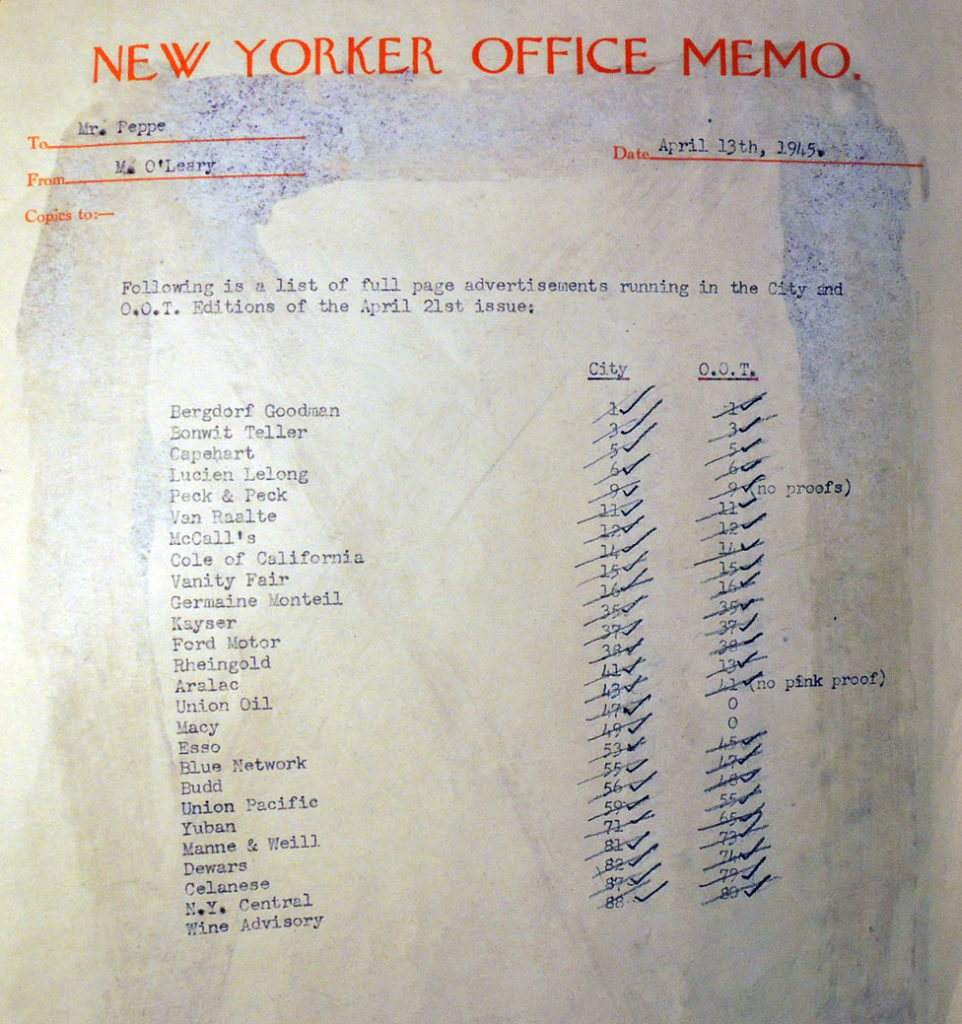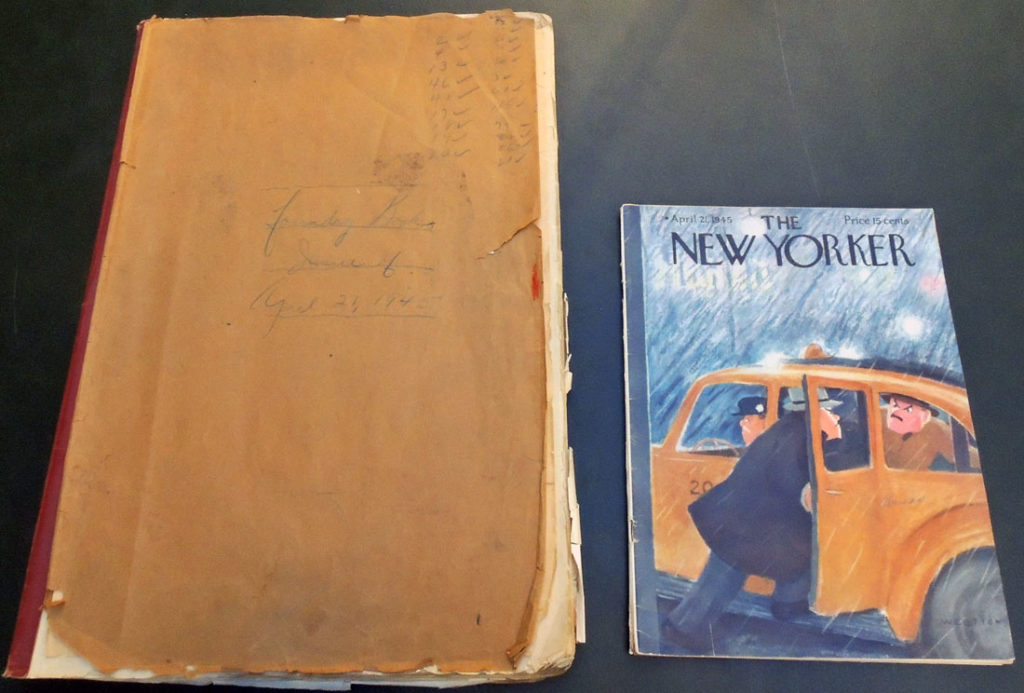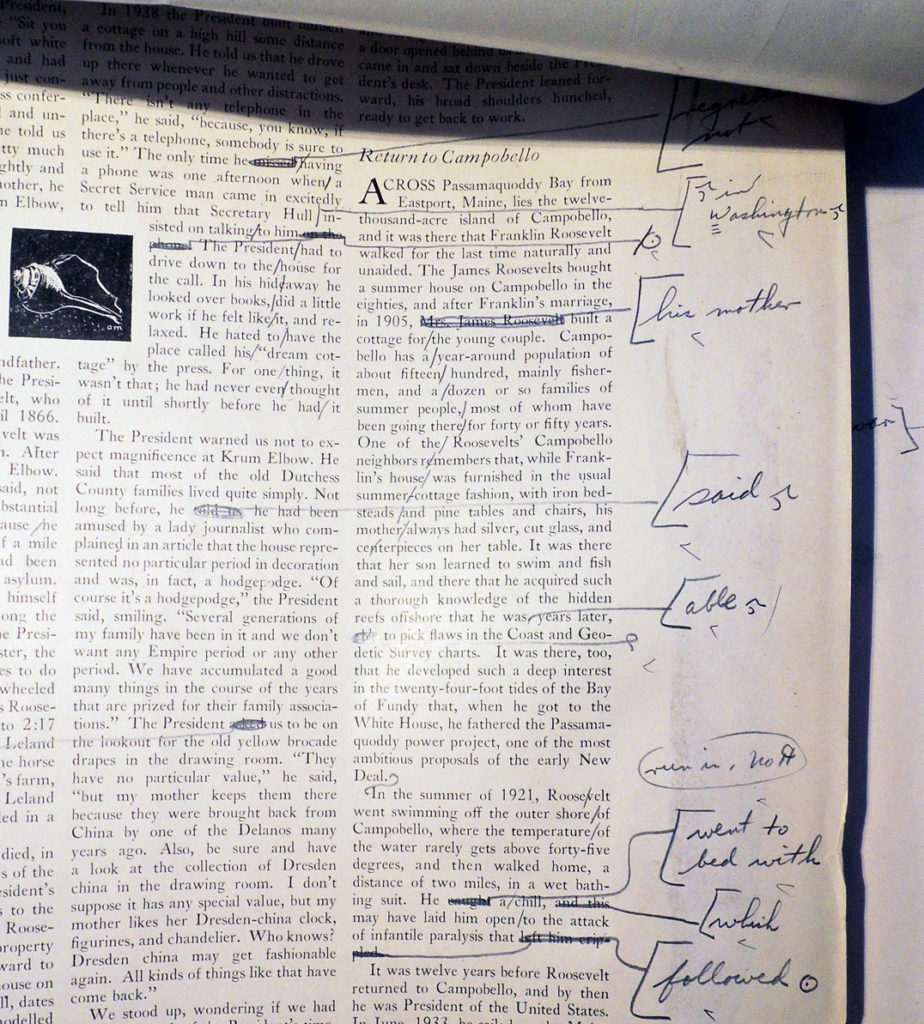E.B. White (1899-1985) began submitting copy to The New Yorker in 1925 and joined the staff the following year. Each issue began with his “Comments” and for the April 21, 1945 issue [seen above], he wrote about the death of Franklin Delano Roosevelt.
“Today, tomorrow, or a day not far off, the great wish, the long dream, will come true—the end of the war in Europe. There may be no surrender, no last laying down of arms, but the victory will be there just the same, the bloody miracle which once seemed hardly possible will have come to pass.” While this section was printed as he wrote it with no editing, there were multiple corrections to the rest of the piece.
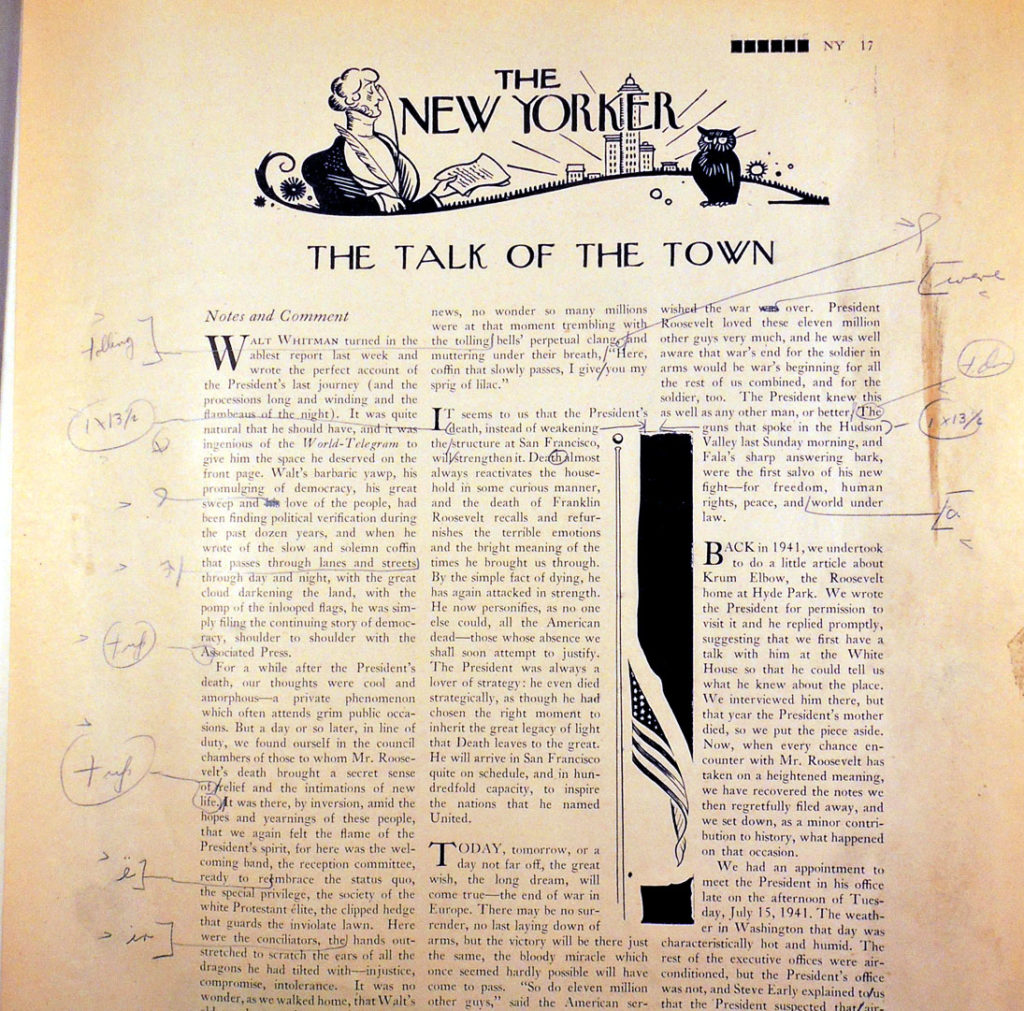 Above: Proof number one. Below Foundry proof with an OK to print.
Above: Proof number one. Below Foundry proof with an OK to print.
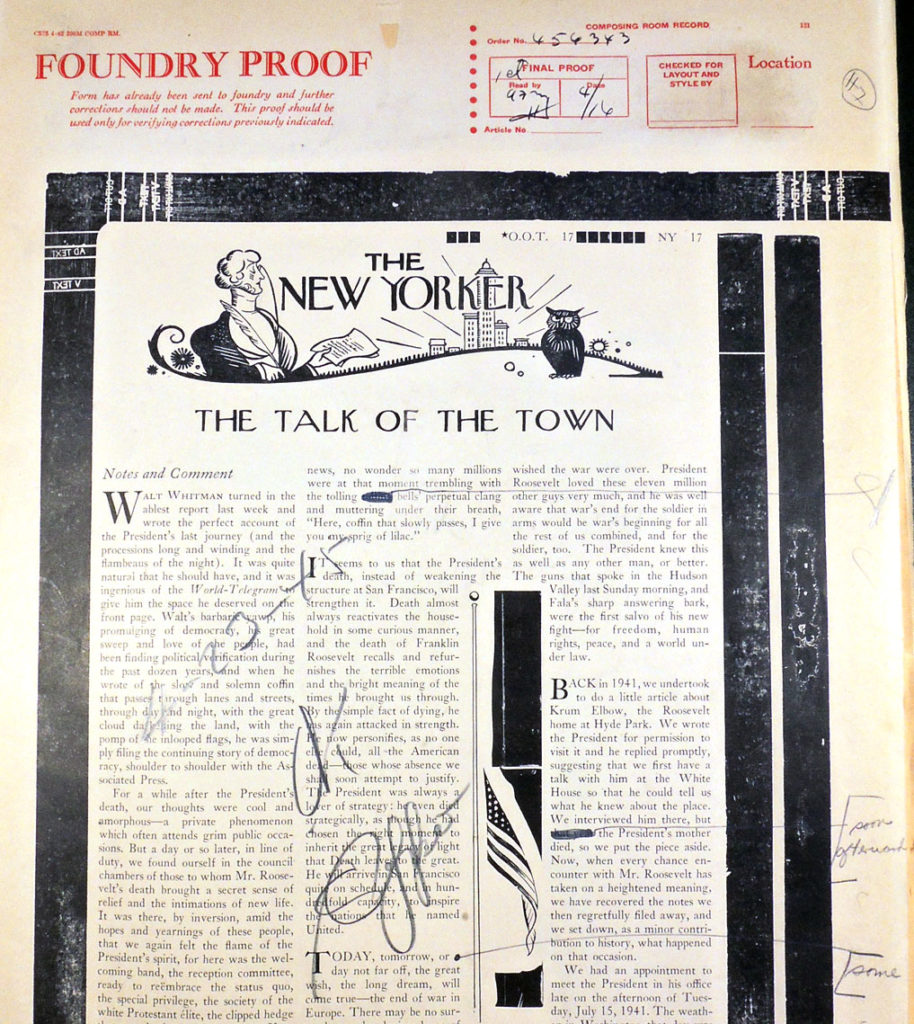
The Graphic Arts Collection recently acquired The New Yorker magazine’s foundry book for the April 21, 1945 issue, which includes the copy edits and proofs for the entire magazine. It is a unique and informative resource in the history of this magazine and for mid-twentieth-century publishing in general.
Each page has several printed versions, as the proofs are marked up and the type is reset. It is not clear whether White is reading and proofing his own copy or whether a staff editor is suggesting these changes. The hand is the same throughout the issue, even making corrections to the cartoons.
This issue also includes a story by John Cheever, pieces by Edmund Wilson, a James Thurber cartoon, and much more. Few pages escaped changes and many are heavily edited.
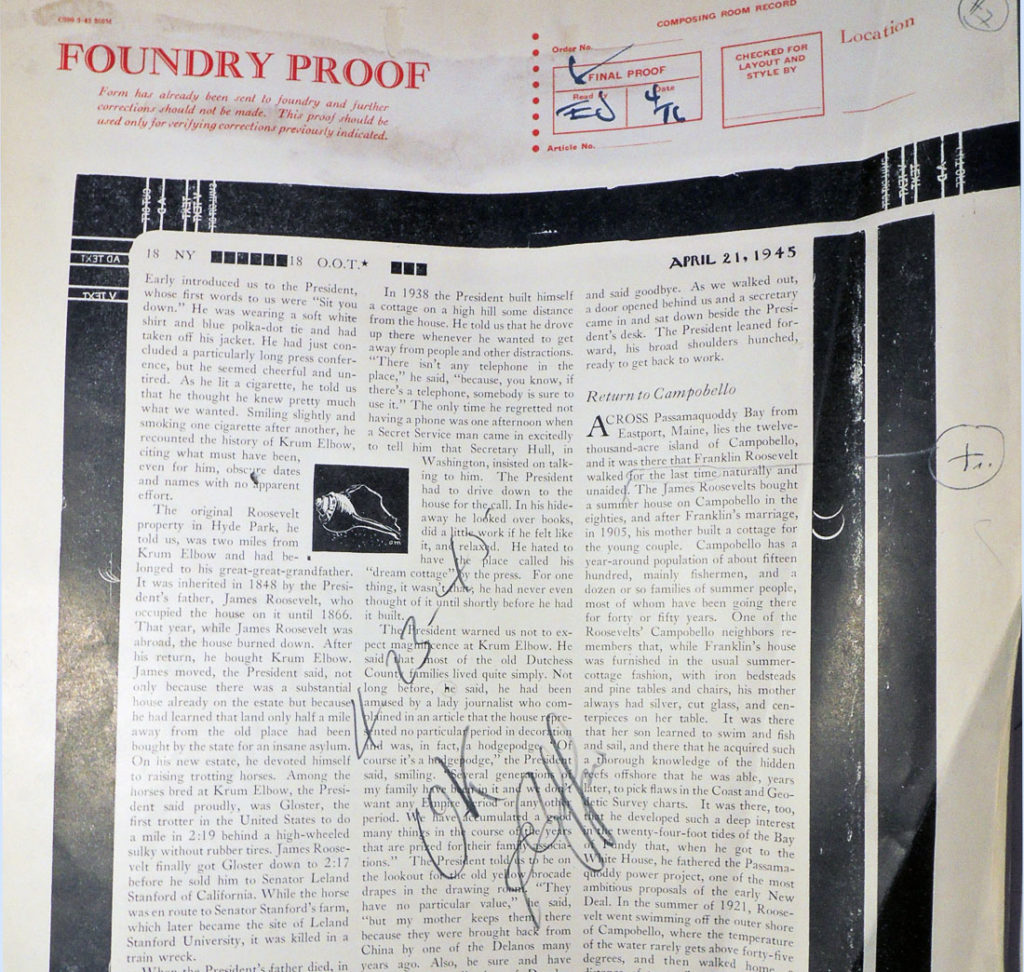
Near the end of his life, E.B. White was interviewed by George Plimpton and Frank H. Crowther for the Paris Review where he commented,
“I do feel a responsibility to society because of going into print: a writer has the duty to be good, not lousy; true, not false; lively, not dull; accurate, not full of error. He should tend to lift people up, not lower them down. Writers do not merely reflect and interpret life, they inform and shape life.” — “Art of the Essay,” Paris Review 12 (Fall 1969): 65-88.
The advertising must have been proofed before it arrived at the magazine, most pages have only the foundry proof.
